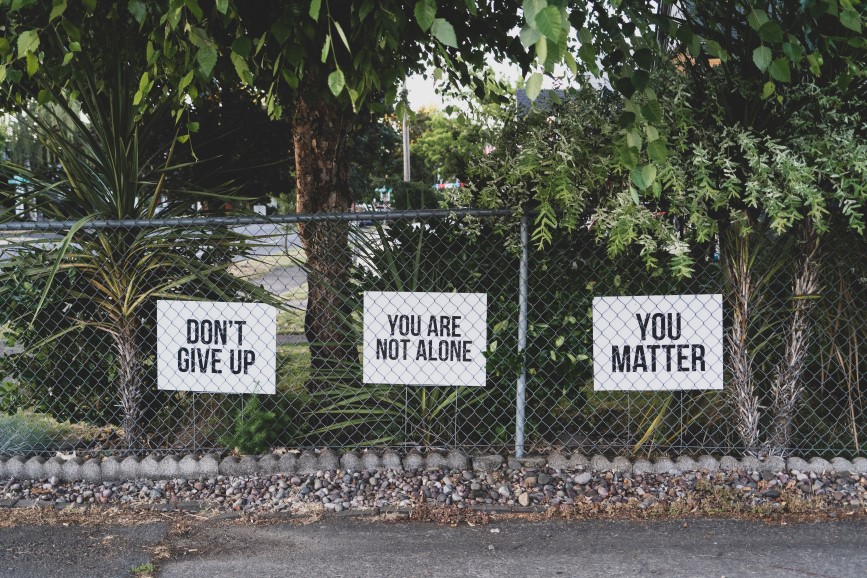Crises Are Not Scheduled
Four Keys to Crafting an
Effective Suicide Prevention Strategy
Crises are not scheduled, and they are certainly not restricted to business hours. Suicide and self-harm risk factors[1] can strike at any moment, which makes anticipation and prevention a challenge. How, then, can patients in crisis receive the care they need, when and where they need it?
The solution is, quite literally, in our hands. Recent human evolution has essentially turned our cell phones into an extension of our selves. Across the globe, we interact with our phones approximately once every 10 minutes.[2] For health care systems and individual providers, technology affords us the opportunity to expand access and bridge crucial care and support gaps for patients with suicidal ideation. Continue reading for four key steps to an effective suicide prevention strategy. 
Provide 24/7 Access to Care
In the throes of a suicidal crisis, patients often describe finding themselves at the bottom of an emotional pit, feeling deep hopelessness and psychic pain, and wondering whether their loved ones would be better off without them. It is in exactly this moment that the individual needs care and support. The next available appointment, or even the next morning, may be too late.
Health care systems can develop formal pathways for access to clinical support around the clock. Intra-system care connections through on-call and per diem clinicians and partnerships with behavioral health technology providers are both reasonable approaches to ensuring 24/7 access to care without overburdening physicians. Compared with publicly available phone, text, and chat-based suicide hotline services, health care systems’ custom solutions may offer the added advantage of interoperable documentation platforms. This will, in turn, allow the individual’s routine care providers to remain aware of the patient’s needs and supports provided.
Take a Patient-Centered Approach
Not everyone who finds themselves in these dark spaces needs to connect with emergency services, and over-reliance on 911 as the only option for moments of crisis creates the potential for overescalation. Unnecessary interactions with law enforcement and EMS during emergency response, particularly for communities of color, may discourage patients from reaching out during subsequent life-threatening crises. Evidence-based alternatives to 911 such as safety planning and phone, text, and chat-based programs put crisis support in the patient’s hands.
Incorporate Applications for Safety and Care Planning
Safety planning is an evidence-based approach to helping people stay safe and manage themselves through a suicidal crisis by outlining, in advance, coping strategies and contacts that the patient can lean on when a crisis occurs. Technology can facilitate safety planning,[3] via apps that a patient can collaboratively complete with their provider. A safety planning app, in the patient’s hands, can provide in-the-moment support for tracking stressors that trigger suicidal thoughts, identifying coping strategies to manage them, and accessing trusted contacts and resources to reach out to in moments of need. A completed safety plan in the patient’s phone can serve as an anywhere-accessible, self-management tool.
Develop Solutions for Proactive Follow-Up Care
Follow-up care can be lifesaving for individuals with suicidal ideation, particularly after an inpatient stay.[4] Follow-up care supports patient adherence to appointments, medications, and other modes of care, helps keep the patient connected to a supportive network, and assists the patient in overcoming applicable social determinants of health that may exacerbate risk.[5] Technology can facilitate follow-up care through phone, text, chat, and email outreach, as well as through automated reminders for clinical and other important ancillary appointments. Follow-up outreach reminds an individual struggling with suicidality that they are not alone, they are thought of and cared for, and that they matter. For patients who feel that others would be better off without them, proactive outreach and follow-up from another, trusted human being may help directly counter any sense of being a burden that belies their suicidal ideation and actions.
An effective suicide prevention strategy is one that meets the patient where they are, whenever they are in need, and on their terms. Technology can be a means to expand access to patient-centered care and address the critical and urgent needs of patients with suicidality. Rather than expecting suicidal crises to align with the availability of existing services, this approach brings care where it is most needed, when it is most needed.

Anitha Iyer, PhD
Director, Behavioral Health Population Management
Mount Sinai Health Partners
Associate Professor of Psychiatry
Icahn School of Medicine at Mount Sinai
